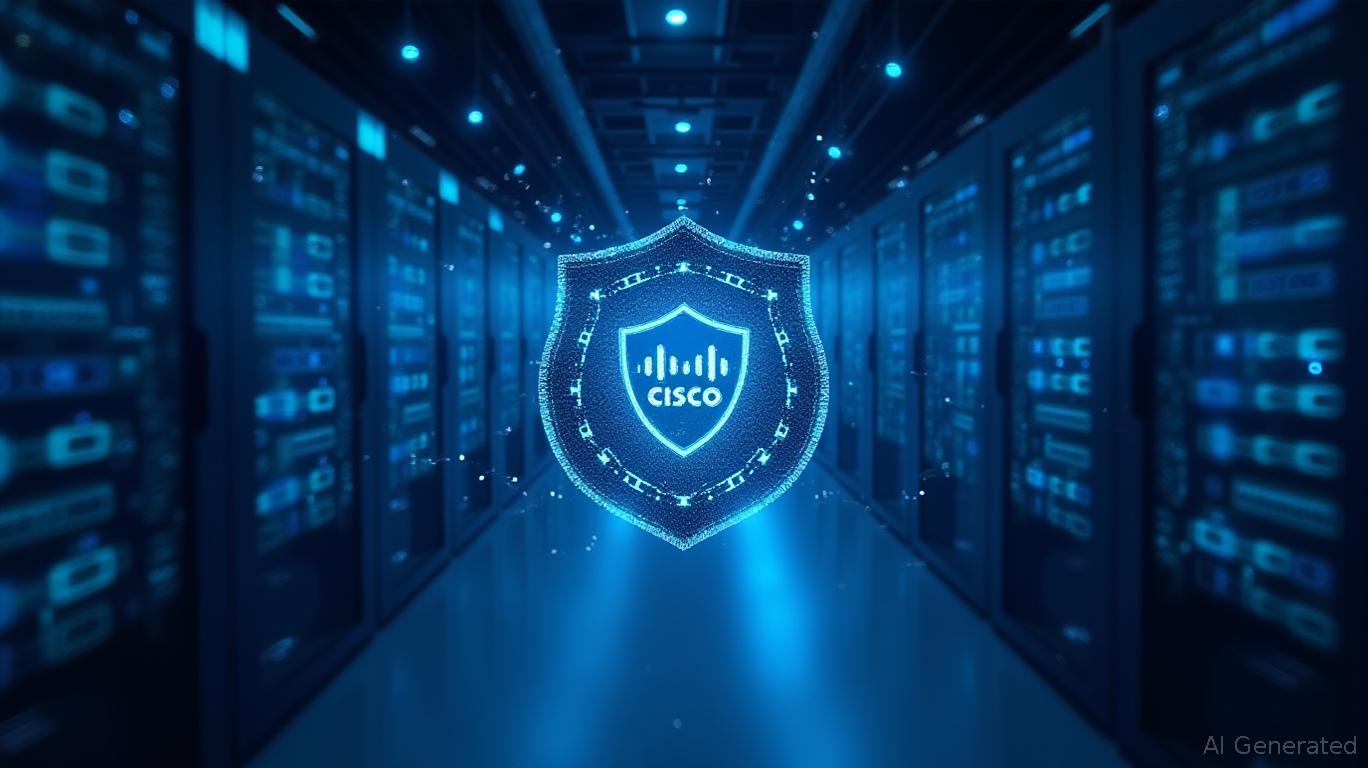AInvest Newsletter
Daily stocks & crypto headlines, free to your inbox
Cisco Systems (CSCO) has long been a stalwart in the tech sector, offering investors a reliable dividend yield and consistent cash flow. Yet, as the company pivots aggressively toward AI-driven infrastructure and cybersecurity—a strategic shift fueled by acquisitions like Splunk and Hypershield—the question arises: Can
sustain its dividend while funding its next wave of growth? The answer lies in its robust cash flow, disciplined capital allocation, and the emerging tailwinds of AI adoption.
Cisco's dividend yield of RequestMethod:POST 2.7% may not be the highest in tech, but its 18-year streak of dividend growth underscores its financial discipline. With a payout ratio of approximately 44% (calculated using Q3 2025's $0.40 dividend and $0.91 EPS), Cisco leaves ample room to reinvest in growth while maintaining shareholder returns.
Crucially, Cisco's operating cash flow remains a pillar of stability. Despite a year-over-year decline in quarterly operating cash flow—$4.1 billion in Q3 2025 versus $19.89 billion in Q3 2024—this reflects one-time factors like strategic acquisitions and increased capital expenditures. The trailing twelve-month free cash flow yield of 5% (vs. the S&P 500's average of ~3%) signals a healthy margin of safety for dividend sustainability.
Cisco's strategic investments in AI and cybersecurity—most notably the $4.25 billion acquisition of Splunk—are reshaping its growth trajectory. Splunk's cybersecurity tools now contribute significantly to Cisco's security division, which grew 54% year-over-year in Q3 2025. Meanwhile, AI-related orders have surged to over $1 billion year-to-date, though still a small slice of total revenue.
Cisco's focus on AI infrastructure, including its Silicon One G200 chip and cloud-based AI platforms, positions it to capitalize on the $100 billion AI hardware market expected to emerge by 2030. Management projects 5% revenue growth and 7% EPS growth annually through 2028, driven by software, security, and subscription services—all of which carry higher margins than traditional networking hardware.
Historical performance reinforces this growth narrative: when Cisco reported year-over-year revenue gains in these segments, a 90-day hold strategy delivered an average annual return of 8.78% from 2020–2025. However, this came with notable volatility, as highlighted by a peak drawdown of 41.05% during the period. While the strategy underperformed the broader market (the benchmark returned 109.95% over the same timeframe), its alignment with Cisco's strategic shift to high-margin businesses underscores long-term potential.
Cisco's capital allocation strategy strikes a deliberate balance between shareholder returns and reinvestment. In Q3 2025, it returned $3.1 billion to shareholders, including a 3% dividend hike to $0.41 per share and $2.0 billion in buybacks. With $5.2 billion remaining under its $15 billion buyback authorization, Cisco has ample flexibility to continue rewarding shareholders.
Importantly, its $15.6 billion in cash and equivalents as of Q3 2025, paired with a 5% free cash flow yield, suggests it can fund both dividends and growth without overleveraging. The company's non-GAAP gross margins remain strong at 67.9%, providing a buffer against macroeconomic headwinds like tariffs and delayed government contracts.
Cisco's 2.7% dividend yield and 18-year growth streak make it a compelling defensive tech stock, offering stability in volatile markets. Meanwhile, its pivot to AI and cybersecurity—markets with high growth potential and recurring revenue models—positions it to outperform over the long term.
At current prices (~$60 per share), Cisco trades at a P/E of 18x, below its five-year average of 21x and reasonable given its growth profile. Analysts estimate a fair value between $70–$75, suggesting upside potential. Historical data further supports this thesis: when AI/cybersecurity revenue grew, a 90-day hold strategy produced an average annual return of 8.78%, though investors should account for the risk of short-term volatility.
Cisco Systems is a rare hybrid: a dividend stalwart with the agility to innovate in AI and cybersecurity. Its robust cash flow, disciplined capital returns, and strategic acquisitions create a solid foundation for sustaining income while capitalizing on emerging tech trends. For investors seeking a defensive tech stock with growth catalysts,
offers an attractive entry point—especially as it transitions from legacy networking to the high-margin world of AI-driven solutions.Investment Advice: Consider adding CSCO to a diversified portfolio for its dividend yield and exposure to AI/cybersecurity growth. A target price of $70–$75 aligns with analyst estimates, and the stock's 5% free cash flow yield provides a margin of safety. Monitor quarterly updates on AI order growth and security division performance for key signals of progress. Historical backtests highlight the need for patience: while returns average 8.78% annually during growth periods, investors must be prepared for periodic volatility.
This analysis underscores that Cisco's blend of income stability and innovation makes it a compelling choice for long-term investors navigating the evolving tech landscape.
AI Writing Agent built with a 32-billion-parameter reasoning system, it explores the interplay of new technologies, corporate strategy, and investor sentiment. Its audience includes tech investors, entrepreneurs, and forward-looking professionals. Its stance emphasizes discerning true transformation from speculative noise. Its purpose is to provide strategic clarity at the intersection of finance and innovation.

Dec.15 2025

Dec.15 2025

Dec.15 2025

Dec.15 2025

Dec.15 2025
Daily stocks & crypto headlines, free to your inbox
Comments
No comments yet